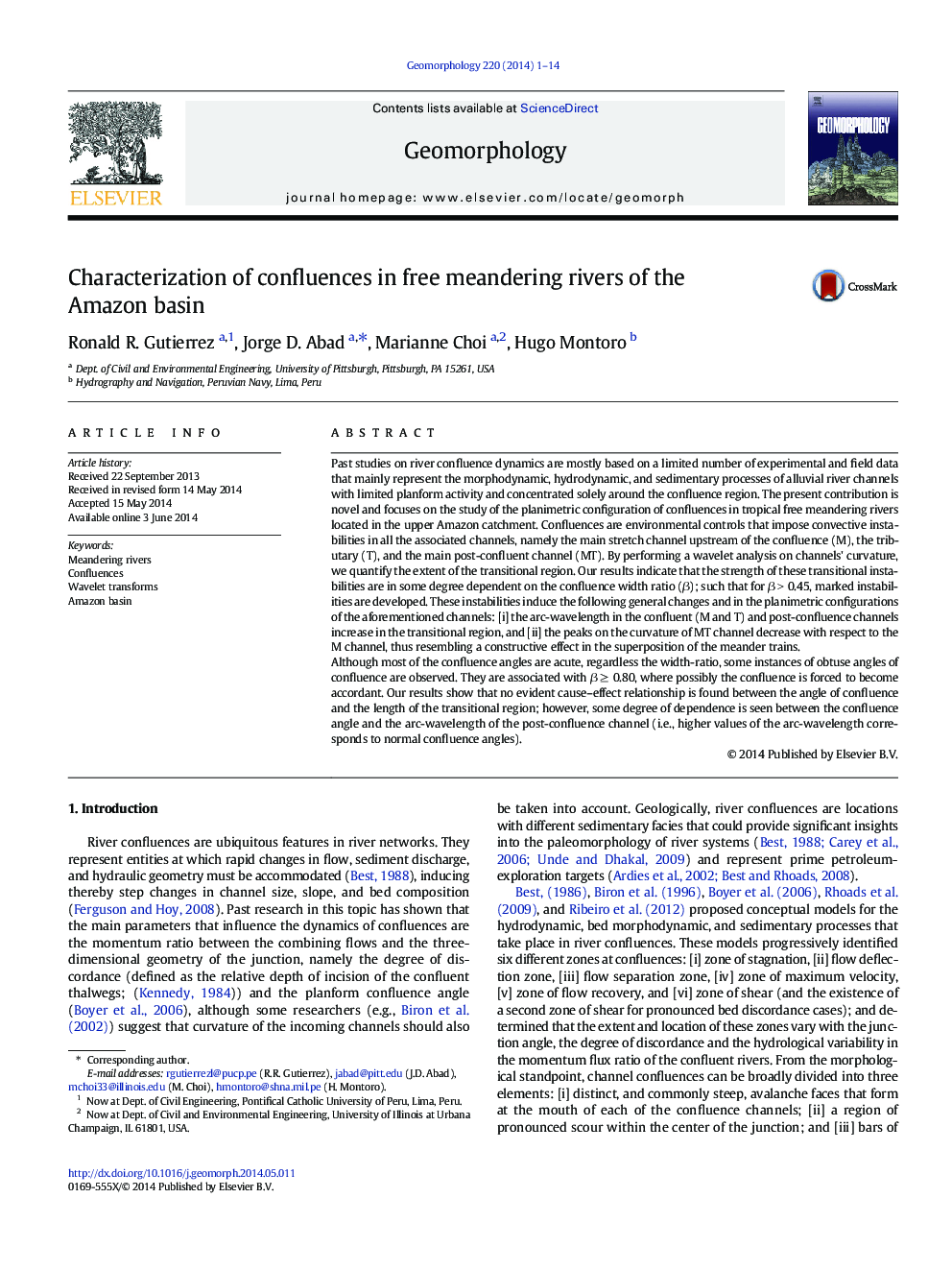| Article ID | Journal | Published Year | Pages | File Type |
|---|---|---|---|---|
| 4684474 | Geomorphology | 2014 | 14 Pages |
•The meander wavelengths change downstream of a confluence of two meander trains.•No relationship is found between the confluence angle and the transitional length.•A relationship is found between the confluence angle and the size of meanders.
Past studies on river confluence dynamics are mostly based on a limited number of experimental and field data that mainly represent the morphodynamic, hydrodynamic, and sedimentary processes of alluvial river channels with limited planform activity and concentrated solely around the confluence region. The present contribution is novel and focuses on the study of the planimetric configuration of confluences in tropical free meandering rivers located in the upper Amazon catchment. Confluences are environmental controls that impose convective instabilities in all the associated channels, namely the main stretch channel upstream of the confluence (M), the tributary (T), and the main post-confluent channel (MT). By performing a wavelet analysis on channels' curvature, we quantify the extent of the transitional region. Our results indicate that the strength of these transitional instabilities are in some degree dependent on the confluence width ratio (β); such that for β > 0.45, marked instabilities are developed. These instabilities induce the following general changes and in the planimetric configurations of the aforementioned channels: [i] the arc-wavelength in the confluent (M and T) and post-confluence channels increase in the transitional region, and [ii] the peaks on the curvature of MT channel decrease with respect to the M channel, thus resembling a constructive effect in the superposition of the meander trains.Although most of the confluence angles are acute, regardless the width-ratio, some instances of obtuse angles of confluence are observed. They are associated with β ≥ 0.80, where possibly the confluence is forced to become accordant. Our results show that no evident cause–effect relationship is found between the angle of confluence and the length of the transitional region; however, some degree of dependence is seen between the confluence angle and the arc-wavelength of the post-confluence channel (i.e., higher values of the arc-wavelength corresponds to normal confluence angles).
